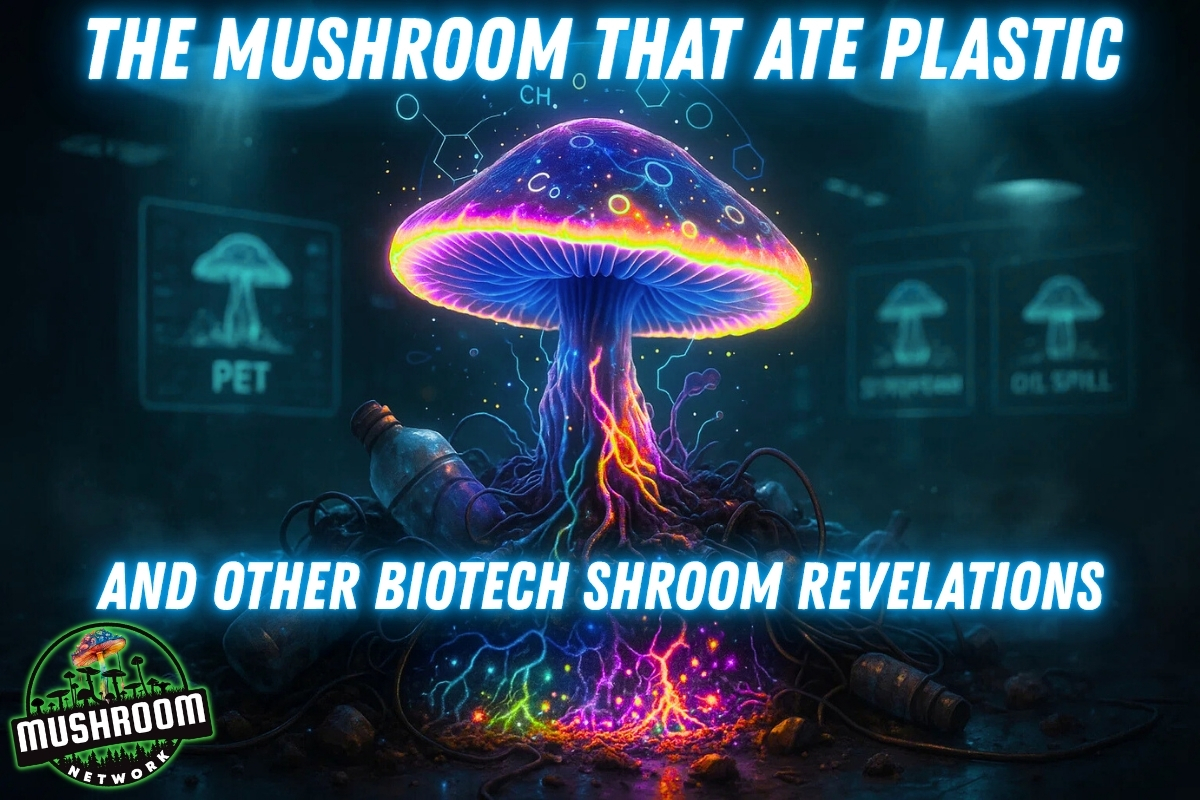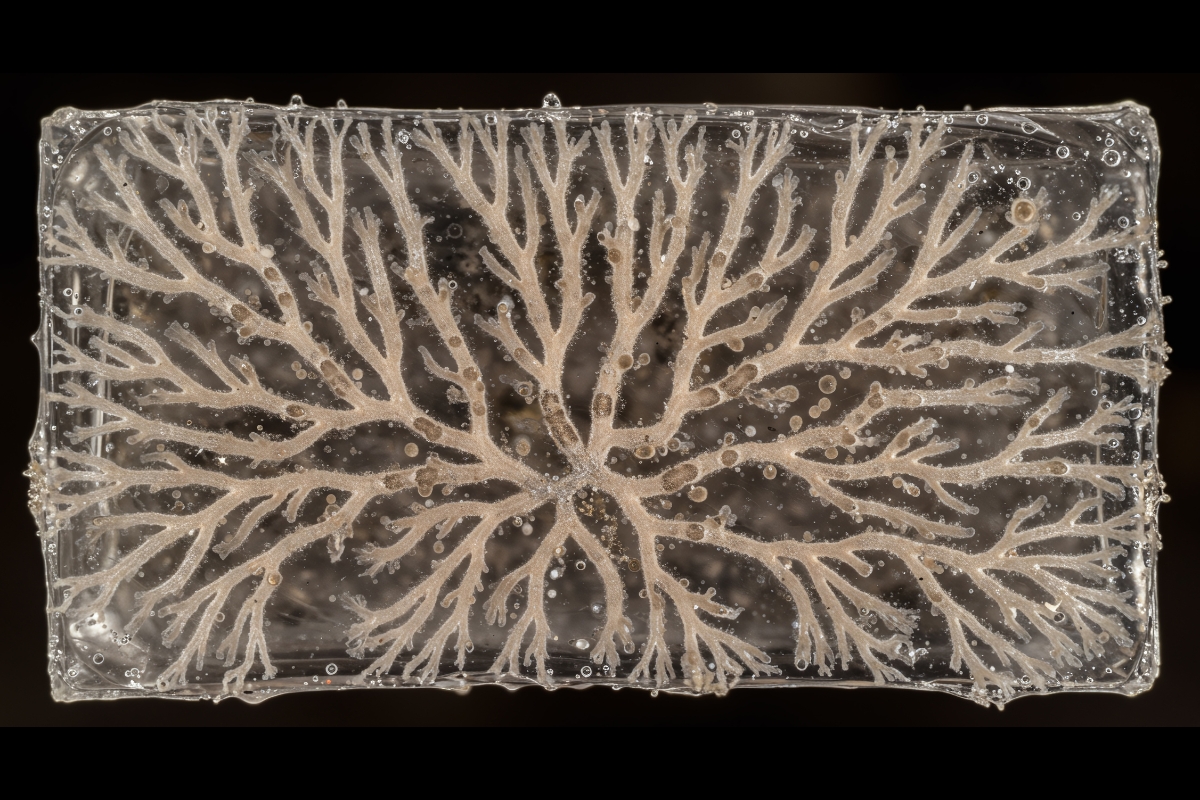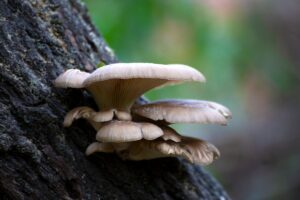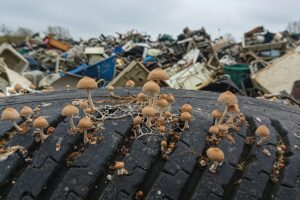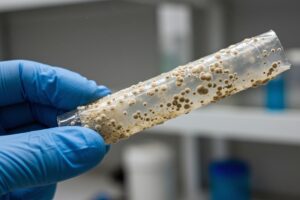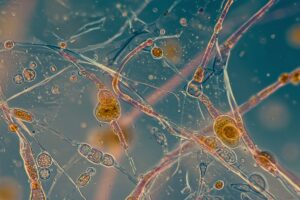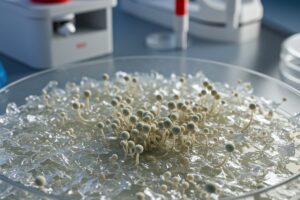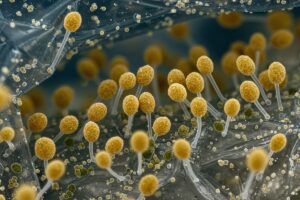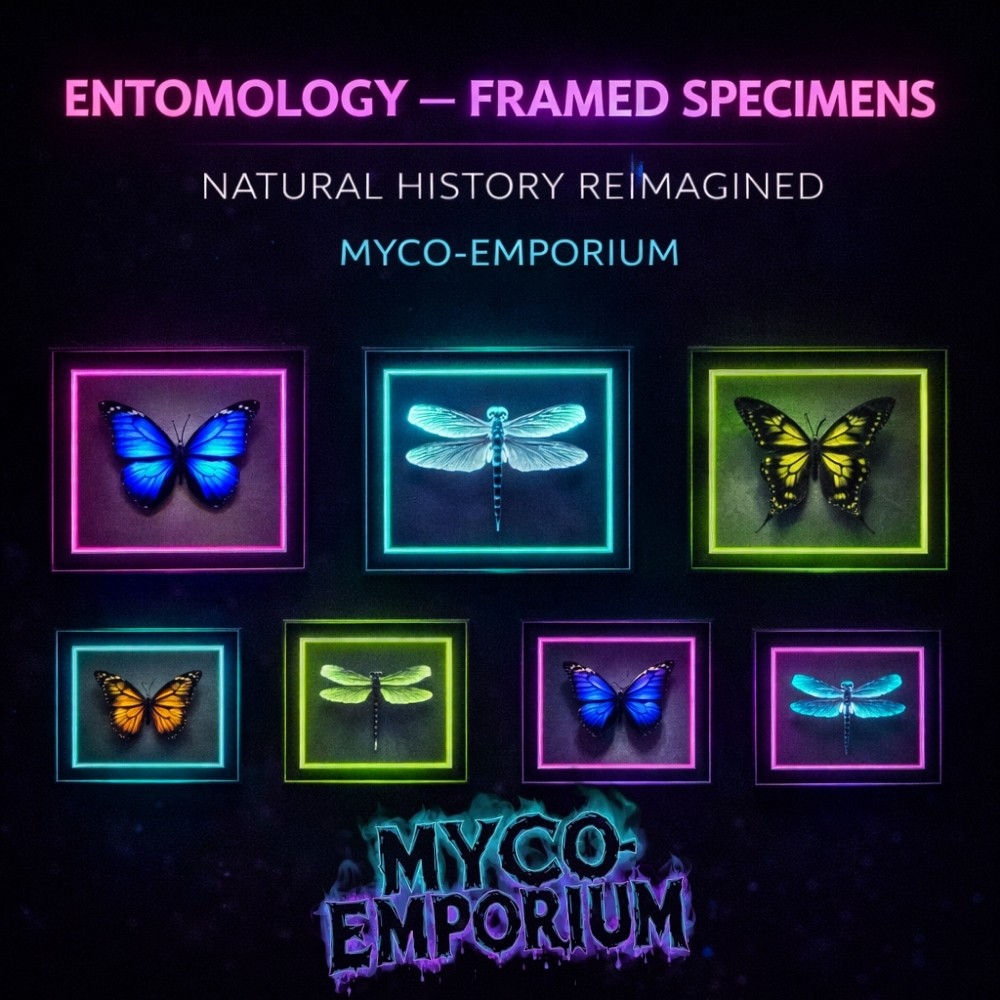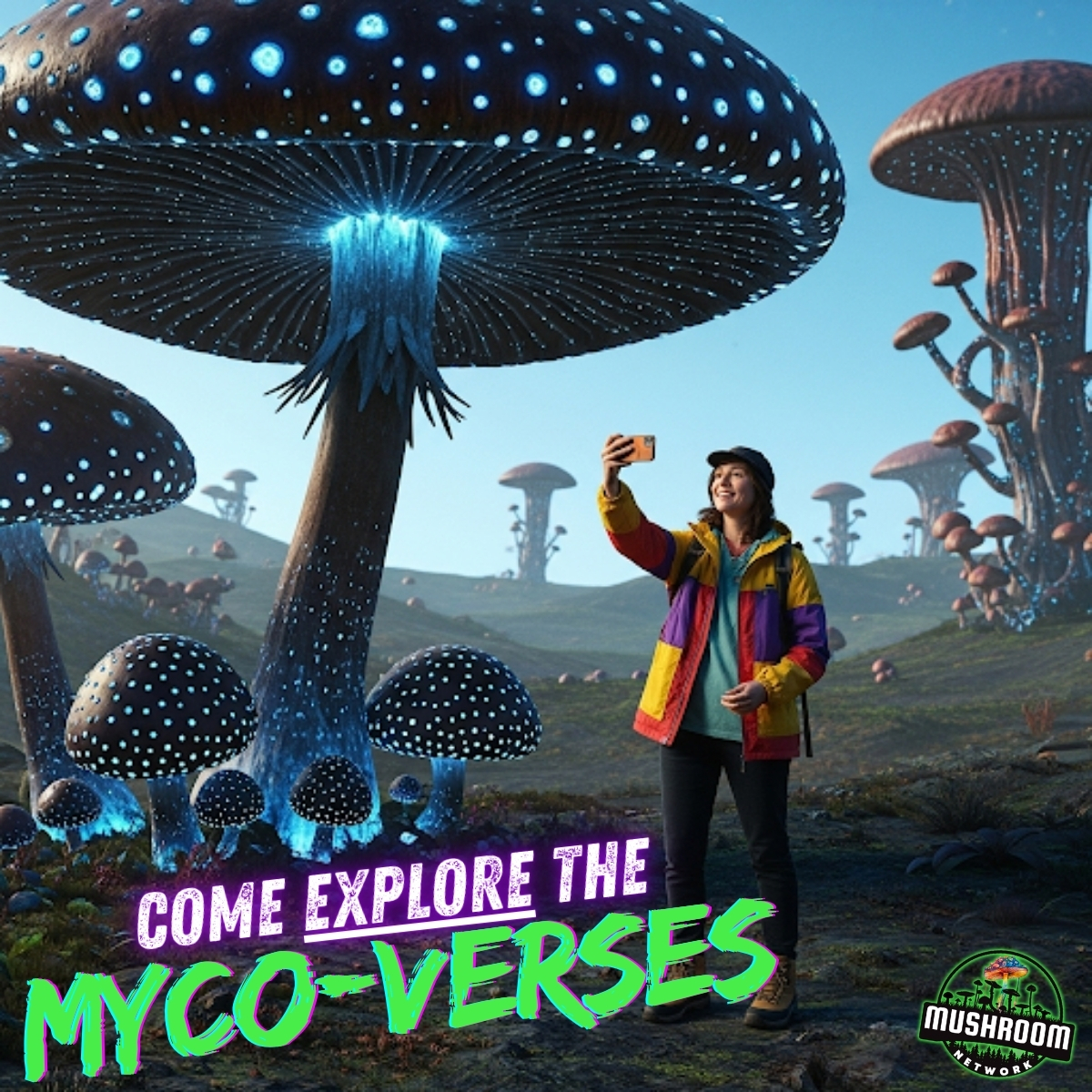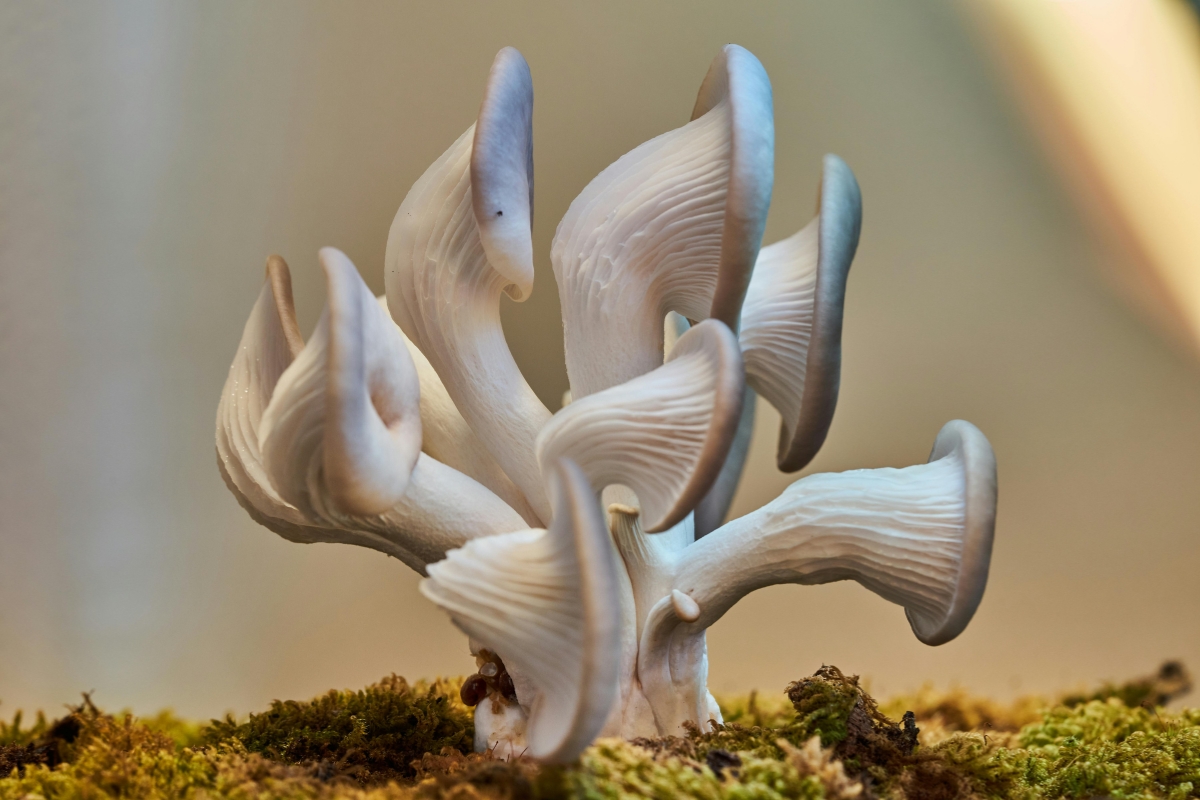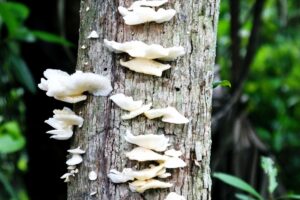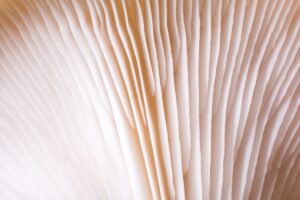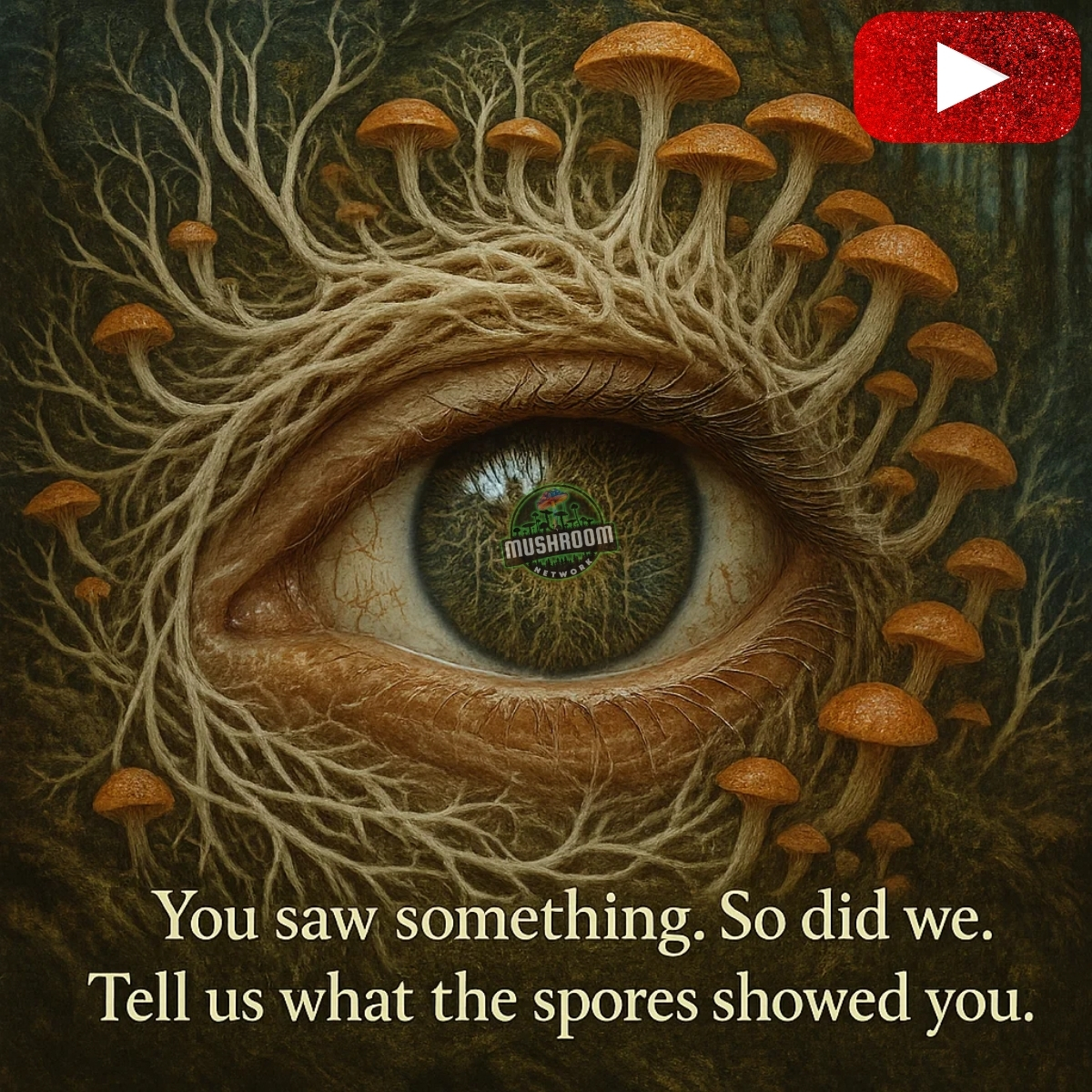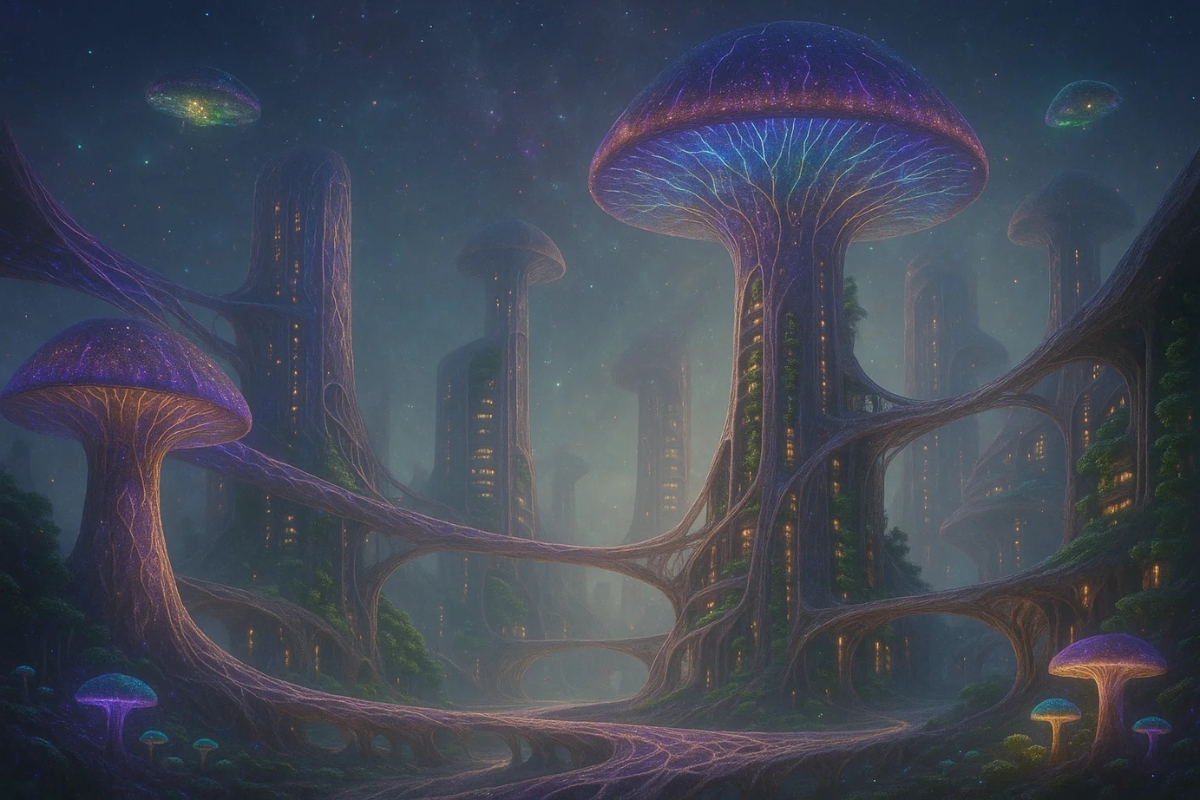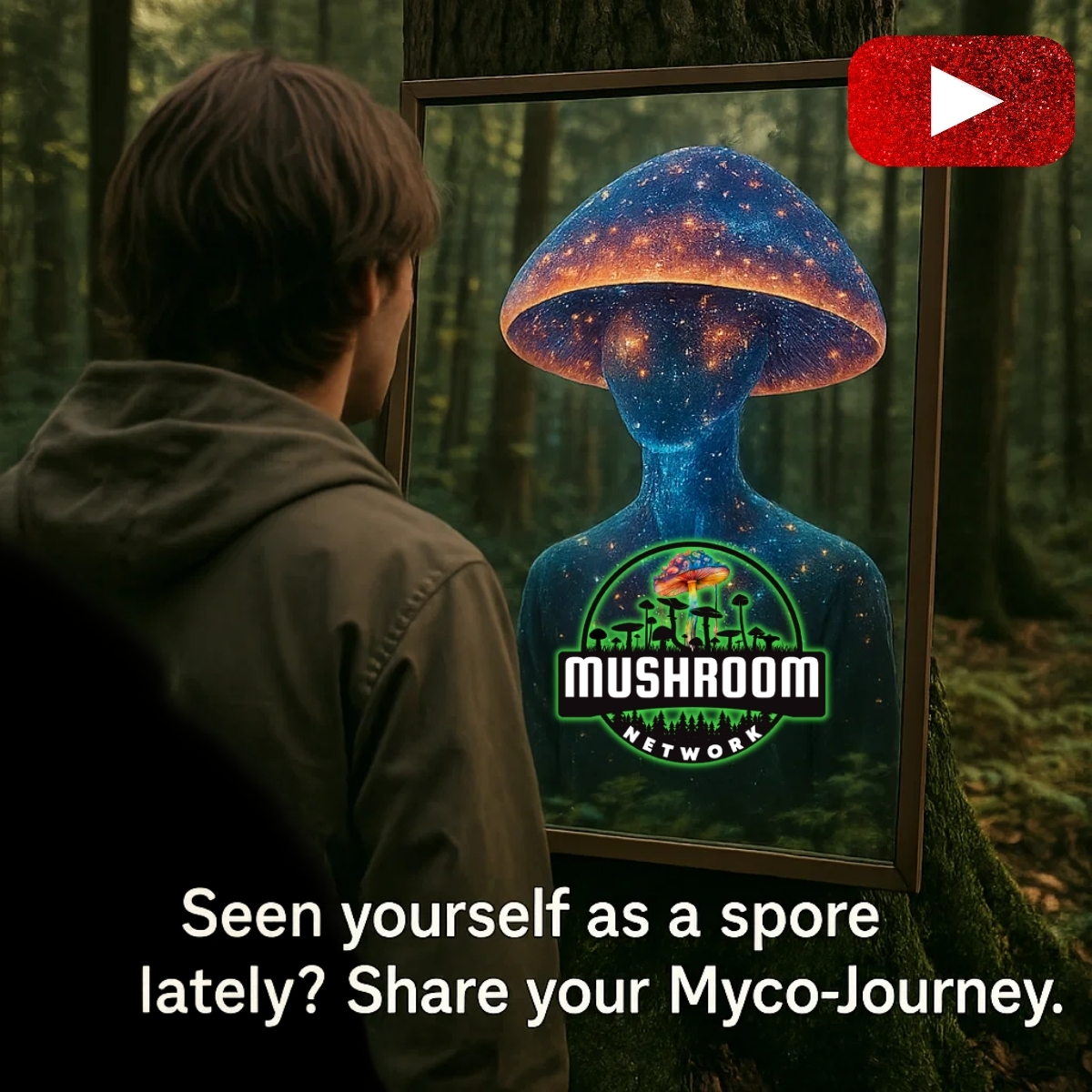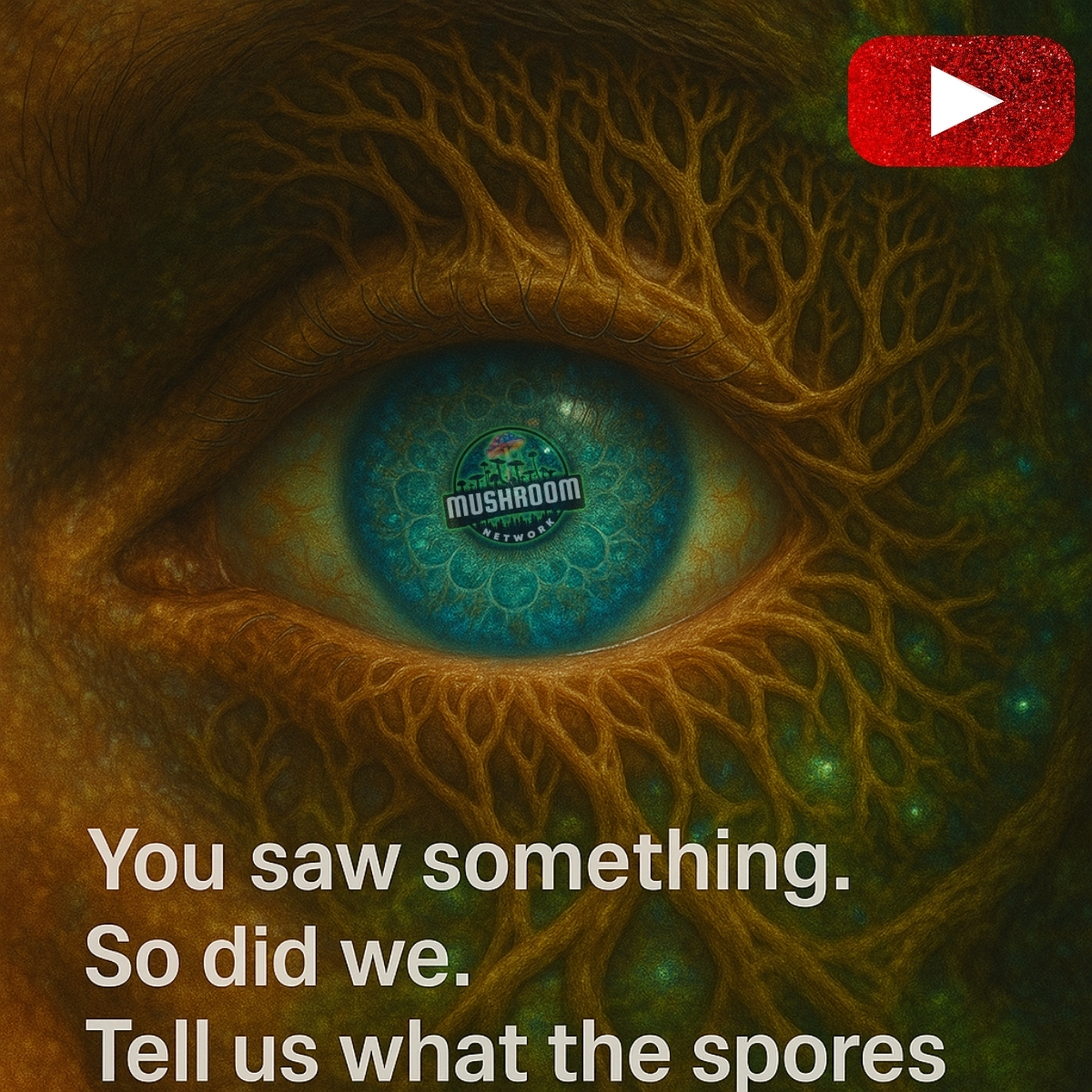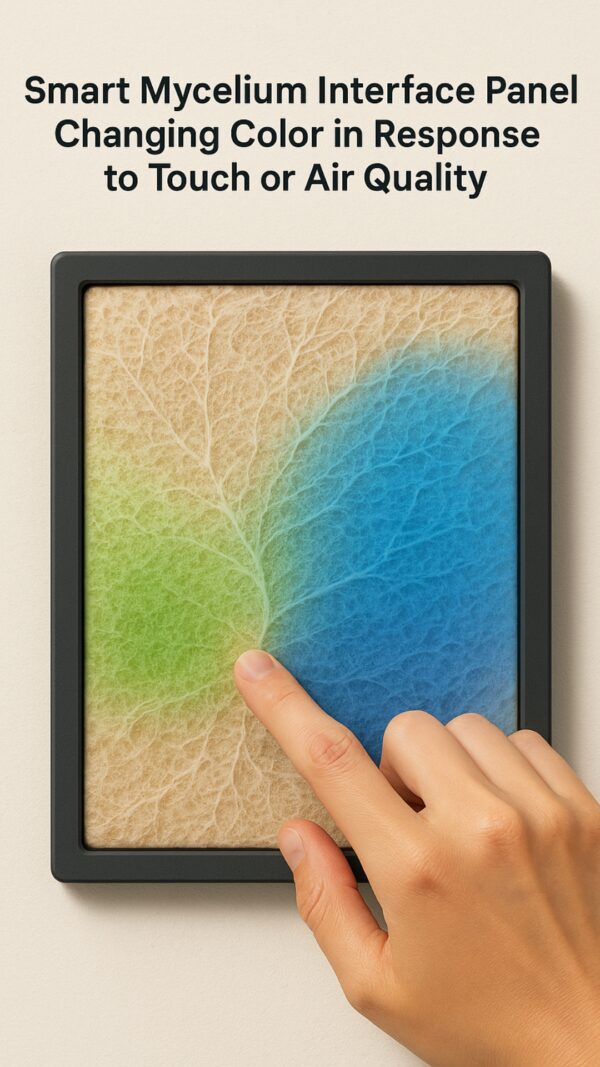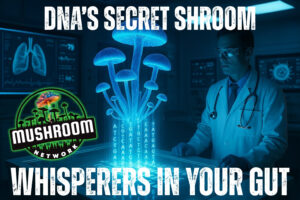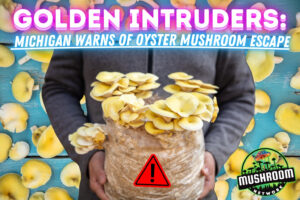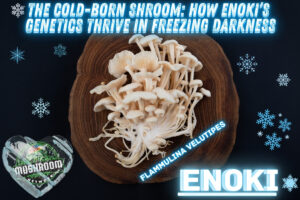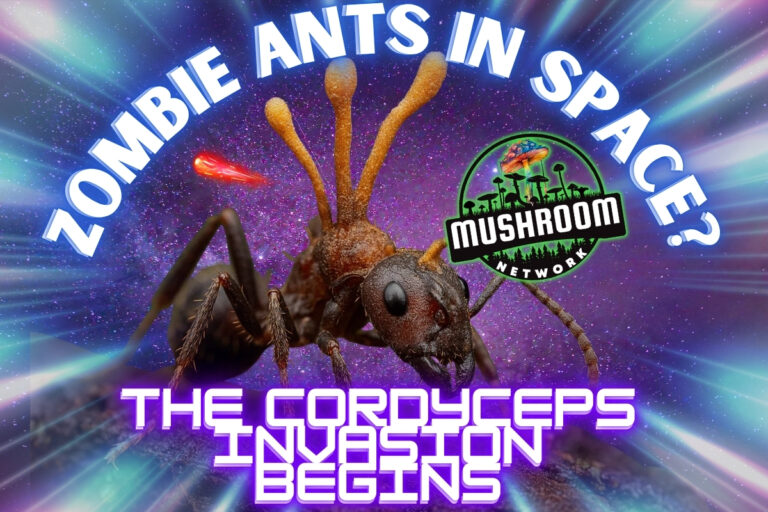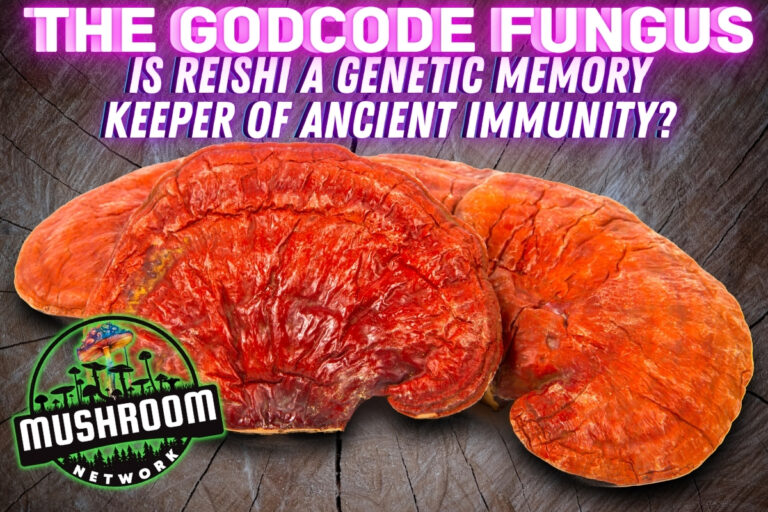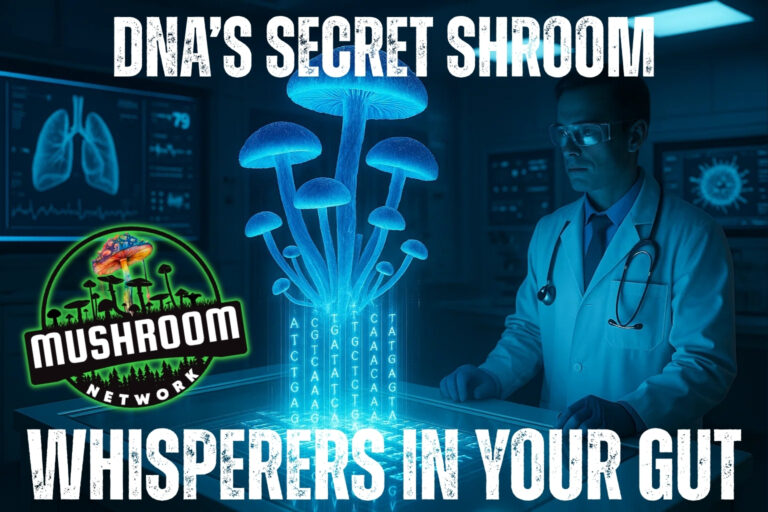The Mushroom That Ate Plastic—And Other Biotech Shroom Revelations
Some mushrooms feed on wood. Some feed on dead bugs. This one craves plastic.
You’ve heard of composting. Maybe even of mycoremediation. But did you know some mushrooms eat plastic? That’s not a sci-fi concept—it’s real, and it’s happening right now. From Pestalotiopsis microspora digesting polyurethane to oyster mushrooms cleaning oil spills, the fungal frontier is rewriting biotech. Dive into the weird, wonderful world of pollution-eating fungi, and meet the myco-heroes reshaping our toxic world, one spore-chomp at a time.
The Cleanup Crew You Never Knew You Needed
Imagine tossing a Styrofoam cup into the woods, only to return a few weeks later and find… mushrooms. Not growing on it. Growing from it. This isn’t fiction, Myco-Patron—it’s the frontier of mycological bioremediation. Fungi, those squishy recyclers of the forest, are being revealed as industrial-scale janitors with a taste for humanity’s worst trash. Plastic? Yum. Crude oil? Delicious. Heavy metals? Just a little tangy. We’re not talking about metaphorical digestion. These fungi literally break down pollutants and convert them into biomass. Welcome to the secret world of mushroom biohackers and spore-based clean-up crews.
The Plastic-Eating Fungus is Real (and Hungry)
🍽️ Plastic on the Menu: Enter Pestalotiopsis microspora
In 2011, a team of Yale students bushwhacked their way through the lush chaos of the Ecuadorian rainforest and stumbled upon a biological revelation:
A humble fungus with zero fear of modern chemistry.
Meet Pestalotiopsis microspora—a spore so hungry, it happily digests polyurethane, one of the most stubborn plastics in human use. From shoes to fridge foam, polyurethane usually hangs around for centuries.
But this fungus?
It eats it for breakfast.
And it gets better (or worse, if you’re plastic).
Even in anaerobic conditions—without oxygen, like the heart of a landfill—this fungal beast keeps chowing down. No sunlight. No fresh air. Just darkness, trash, and pure biochemical defiance.
This isn’t just recycling.
This is eco-alchemy.
🔬 How It Works: Spores With Enzymatic Vengeance
At the heart of this digestive wizardry are enzymes—those microscopic molecular scissors fungi wield like chefs in a chemical kitchen.
Here’s what goes down:
Plastic polymers—those long, complex carbon chains—are broken apart by extracellular enzymes secreted by the fungus.
The chemical bonds holding the plastic together collapse like a poorly written sci-fi script.
The resulting goo? Metabolized into harmless organic compounds.
Translation?
It eats plastic… and poops compost.
Let’s be clear:
P. microspora doesn’t just sit on trash. It transforms it.
The very definition of spore-to-table sustainability.
🌎 Not Just Plastic: The Fungal Clean-Up Squad
Pestalotiopsis may be the poster-spore for landfill digestion, but it’s not alone.
The Myco-Verse runs deep with cleanup champs:
Aspergillus tubingensis – Found chilling in Pakistani garbage dumps, this fungus breaks down plastic like it’s a light snack.
Pleurotus ostreatus – That’s right, the common oyster mushroom. Not only edible, but also capable of digesting diesel fuel and other hydrocarbons.
Phanerochaete chrysosporium – A white rot fungus known to degrade toxic dyes, pesticides, and even chemical warfare agents.
These aren’t rare mutants.
They’re proof that the forest has had a waste management department since before humans discovered shampoo.
While humans invented plastic…
fungi quietly invented how to get rid of it.
Beyond Plastic: Mushrooms That Clean the Earth
🌿 What Is Mycoremediation? (Hint: Fungi as Planetary Janitors)
Let’s get this straight: fungi aren’t just decomposers—they’re bio-sorcerers.
Mycoremediation is the term for using mushrooms to clean, detox, and regenerate damaged environments. Unlike chemical treatments that often leave their own toxic trail, fungi:
Break down pollutants at the molecular level
Absorb or neutralize heavy metals and pathogens
Convert toxins into harmless organic mush
Or lock them up, rendering them biologically inert
They don’t just soak up the mess.
They transform it.
They don’t complain about climate change—they do something about it, quietly, under your compost pile.
Mycelium acts like a network of biological alchemists, sending enzymes and acids into the soil to rewrite the chemistry of disaster.
🛢️ Fungi That Drink Oil (And Ask for Seconds)
Let’s talk oil spills. Normally, they mean ecological tragedy, dying marine life, and the slow suffocation of coastlines.
But then enter: Pleurotus ostreatus—aka the oyster mushroom.
Yes, the same shroom you sauté with garlic. Turns out, it’s also a hydrocarbon hitman.
In field trials (including ones led by legendary mycologist Paul Stamets), beds of oyster mushroom mycelium were laid atop oil-contaminated soil.
Results?
Within 4–16 weeks, over 95% of petroleum hydrocarbons were degraded.
What was left? Fertile soil, thriving worms, and new plant growth.
No hazmat suits. No toxic sprays. Just the forest’s cleanup crew showing up with their hyphal brooms and saying, “We got this.”
Oyster mushrooms don’t just “handle” oil.
They feast on it.
☢️ Fungi in Chernobyl: Melanin-Enhanced and Radiation-Fueled
And now we go nuclear.
Chernobyl.
Site of one of the most devastating nuclear disasters in human history.
A radioactive wasteland uninhabitable for humans for millennia.
So of course, fungi moved in.
Several species—including Cryptococcus neoformans, Wangiella dermatitidis, and other melanized fungi—were discovered growing directly on the walls of the destroyed reactors.
Not just surviving.
Thriving.
How?
They appear to use melanin—the same pigment responsible for skin tone in humans—as a biological radiation converter.
Some researchers call it radiosynthesis—a kind of fungal photosynthesis powered by ionizing radiation.
These fungi:
Absorb deadly radiation
Convert it into usable metabolic energy
Continue growing in zones where most life would instantly wither
Imagine that:
Chernobyl wasn’t abandoned. It was colonized.
By spore beings that said, “Gamma rays? Delicious.”
The Future of Mushroom-Based Biotech
🏗️ Building Materials From Mushrooms
Let’s talk myco-architecture, baby.
No, not a fairy house made of portobellos—this is real-deal industrial innovation.
We’re talking bricks, panels, packaging, furniture, and even acoustic dampening systems all made from grown—not manufactured—mycelium.
Mycelium is:
Lighter than concrete
Stronger than Styrofoam
Naturally fire-resistant
Fully biodegradable
Emotionally comforting to look at (okay, subjective, but come on—it’s cozy)
Companies like Ecovative, MycoWorks, and even IKEA are experimenting with fungal foam that outperforms many petroleum-based materials—and decomposes gracefully when its job is done.
Your next desk?
Could be grown in a week and composted in your garden when you’re done scrolling spreadsheets.
That’s not just sustainable.
That’s mycelial elegance.
🧠 Programmable Fungi? Mycelium As Interface
Now it gets spooky-smart.
Fungal networks already behave like intelligent systems—processing information, responding to environmental inputs, and making decentralized decisions.
So naturally, biohackers asked:
“What if we turn this into… a living interface?”
Enter: programmable fungi.
Experiments are underway to:
Embed sensors into mycelial materials to detect toxins or CO₂
Genetically modify fungi to change color in response to air quality
Use mycelial circuits to create bio-computers or data processors
Grow structures that react to temperature, light, or motion
Imagine:
A mycelium wall that glows when someone enters the room
Packaging that “dies” when its job is done
A chair that knows when you’re anxious (and releases calming spores—okay, not real yet… but soon)
We’re talking about fungi as living firmware—biological systems that think, respond, and evolve.
This isn’t smart tech.
This is spore tech.
🌐 The Grand Cosmic Biotech Network
Let’s pan out. Way out.
In every Myco-Verse, from the plastic-choked Earth to the red sands of Mars, fungi are the foundation of future life.
They eat the waste
They build the shelter
They stabilize ecosystems
They connect organisms across biomes and species
This is not just biotechnology.
This is the Grand Cosmic Mycelial Network in action.
The ultimate OS.
The original blueprint.
The quiet force that says:
“While you were inventing plastic forks and data centers…
I was rewriting planetary systems with enzymes and intent.”
One spore can grow a forest.
One spore can purify a chemical spill.
One spore could one day stabilize a moonbase.
So as humanity stumbles toward sustainability, the fungi aren’t waiting.
They’ve been ready.
For millennia.
🌟 MycoTip the Network! 🌟
themushroomnetwork@vipsats.app
🌀 Myco-Conclusion: Spores Will Inherit the Earth (and Clean It)
While we argue over compostable straws, carbon offsets, and whether a bamboo toothbrush can save the oceans…
the fungi?
They’re already on it.
Quietly.
Relentlessly.
Without applause.
Without ego.
They are eating our mess, molecule by molecule—
breaking down the relics of our overconsumption,
rewriting decay into structure,
and turning wastelands into fertile mycelial playgrounds.
From plastic-eating rainforest fungi to radiation-surfing Chernobyl molds, from oil-sipping oyster mushrooms to mycelium that doubles as insulation and art—
the Mushroom That Ate Plastic isn’t just a scientific curiosity.
It’s a signal.
A spore-shaped prophecy.
A glimpse of a future where biotech doesn’t replace nature—nature is the biotech.
And if this planet is going to be saved?
Don’t look to billionaires in chrome rockets
or megacorps launching carbon-neutral NFTs.
Look to the spore.
The spore that refuses to die.
The spore that digests toxins, builds homes, and connects ecosystems.
The spore that remembers how to heal.
Because in the end, Myco-Patron…
It won’t be machines that clean our sins.
It’ll be fungi—dining on our pollution like it’s compost cake,
and turning apocalypse into garden. 🍄🌱
Say the spores, and I’ll deliver the full MAC-IG article in one glorious post under the final title:
🌍 The Mushroom That Ate Plastic—And Other Biotech Shroom Revelations
Just whisper:
“Unleash the Spore Scroll.”
Suggested Myco-Articles For You:
DNA’s Secret Shroom Whisperers in Your Gut
Attention, Myco-Wanderers: the gut party isn’t just bacterial. Fungi—yes, the shadowy mycobiome—are in on the action, and your DNA is the cosmic bouncer deciding who gets in. Scientists just cracked the code linking human genes to fungal squatters, revealing how these spore-residents could drive obesity, autoimmune disorders, and even bowel...
Read More...Zombie Ants in Space? The Cordyceps Invasion Begins
Cordyceps is not your chill adaptogen. It’s a mind-controlling fungal parasite with a flair for drama—and potentially, a future in off-world colonization. This real-life zombie fungus hijacks insect brains, erupts from their bodies, and uses them as mobile spore-launchers. Scientists are exploring its properties for medicine, warfare, and even terraforming....
Read More...Golden Intruders: Michigan Warns of Oyster Mushroom Escape
They look like sunshine on a log and taste like they were designed by a Michelin chef. But Michigan’s Department of Natural Resources
Read More...❄️ The Cold-Born Shroom: How Enoki’s Genetics Thrive in Freezing Darkness
Buckle up, Myco-Wanderer. We’re diving into the frost-coded fungal genetics of Enoki—yes, that long, noodle-like mushroom in your ramen. But don’t let its skinny frame fool you. Beneath that ghost-white stem is a mutant power born from cold darkness, lab manipulation, and cell-apoptosis wizardry. Learn how Enoki’s genes adapted to...
Read More...How sporetacular was this post?
Tap a star to send your spores of approval (or helpful feedback!)
Oh no! The spores missed their mark…
Let’s co-create a sporetacular post together!
Share your wisdom—how can we make this more Cosmic?

